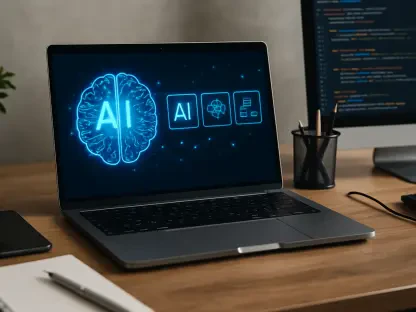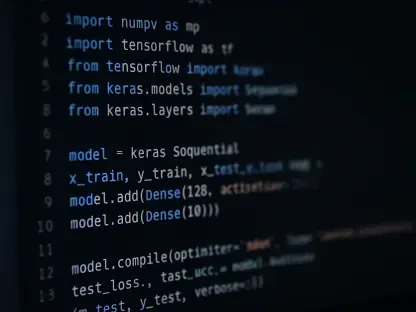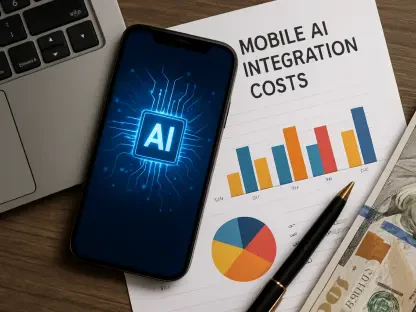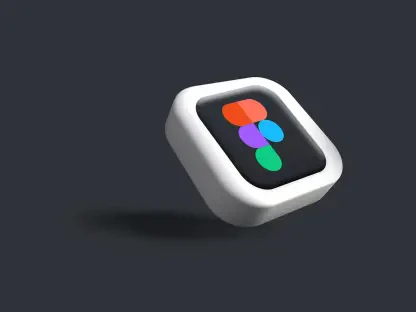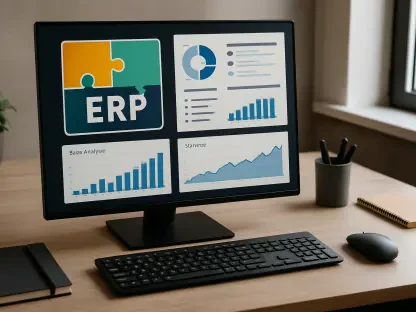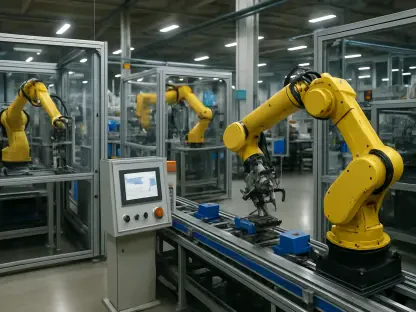Researchers from Tsinghua University have recently released and open-sourced CogAgent-9B-20241220, an advanced GUI (Graphical User Interface) agent model. This innovative tool, powered by Visual Language Models (VLMs), is designed to address persistent challenges in automating GUI interactions. Traditionally, navigating and interacting with GUIs has been difficult due to the need to understand visual context and manage dynamic and varied GUI designs. CogAgent’s ability to combine visual and linguistic capabilities marks a significant advancement in the field.
Innovative Methods and Capabilities
Integration of Visual and Linguistic Information
CogAgent employs innovative methods that integrate visual and textual information to interpret GUI components and their functionalities. This integration equips the model to handle tasks such as clicking buttons, entering text, and navigating menus with high precision and reliability. The architecture utilizes advanced VLMs optimized for processing both visual data, such as screenshots, and text, employing a dual-stream attention mechanism that enhances its predictive capabilities regarding user intent and relevant actions. By processing visual and textual elements simultaneously, CogAgent can seamlessly adapt to a variety of GUI contexts, identifying and executing the necessary user interactions with significant accuracy.
The dual-stream attention mechanism plays a pivotal role in the model’s effectiveness. This setup allows the model to focus on relevant parts of the visual and textual input simultaneously, enhancing its ability to perform complex tasks. For instance, when confronted with a cluttered interface, CogAgent can accurately decipher which buttons to press and what inputs are required based on the context presented by the user. This capability not only makes CogAgent reliable in well-structured environments but also in more chaotic and less predictable GUI scenarios, making it a versatile tool for developers and researchers.
Generalization Across Diverse GUIs
One of the standout features of CogAgent is its advanced capability to generalize across a diverse range of GUIs without needing extensive retraining. This generalization is facilitated by transfer learning techniques, allowing the model to adapt swiftly to new layouts and interaction patterns. Transfer learning enables CogAgent to leverage the knowledge it has acquired from previous tasks, applying it to new situations with minimal additional training. This approach significantly reduces the time and resources required to deploy the model in new environments, making it highly efficient.
This ability to generalize makes CogAgent a versatile tool for various applications, reducing the need for constant updates and retraining. Whether it’s for software testing, user interface design, or other tasks, CogAgent can efficiently adapt to different GUI configurations. This adaptability is particularly beneficial in the fast-paced world of software development, where user interfaces frequently change and evolve. By utilizing transfer learning, CogAgent ensures that it remains relevant and effective across different versions of applications, providing consistent performance without the hassle of frequent retraining.
Reinforcement Learning and Adaptability
Performance Improvement Through Feedback
CogAgent incorporates reinforcement learning techniques, enabling the model to improve its performance through feedback. This approach fundamentally enhances its adaptability and effectiveness over time. By learning from interactions and adjusting its actions based on outcomes, CogAgent becomes more efficient and reliable in handling complex GUI tasks. Every interaction provides the model with data about what actions are most effective, allowing it to refine its strategies and improve its accuracy with each use. This iterative process of learning and adapting makes CogAgent increasingly proficient in its tasks.
The reinforcement learning framework also allows for the continuous enhancement of CogAgent’s capabilities. As the model encounters new and varied GUI configurations, it learns to navigate and interact with them more effectively, continually improving its performance. This dynamic learning capability is crucial for maintaining high standards of accuracy and reliability, especially in environments where GUI designs are frequently updated. Over time, CogAgent’s performance becomes increasingly aligned with user expectations, making it a robust tool for long-term deployment in various applications.
Efficiency in Data Usage
The model’s efficiency in data usage is another significant advantage. CogAgent requires up to 50% fewer labeled examples than traditional models, thereby reducing the cost and effort associated with large-scale data labeling. Data labeling is often a significant bottleneck in developing machine learning models, as it requires substantial time and resources to create accurate and comprehensive datasets. By reducing the amount of labeled data needed, CogAgent makes it more feasible to deploy sophisticated automation tools without the prohibitive costs traditionally associated with data preparation.
This efficiency makes it a practical solution for real-world deployment, where data labeling can be a significant bottleneck. Moreover, the reduced need for labeled data accelerates the development and deployment process, allowing businesses and developers to implement CogAgent more rapidly. This advantage is particularly relevant in commercial settings where time-to-market is crucial, and resources are often limited. By lowering the barriers to entry, CogAgent democratizes access to advanced GUI automation technologies, enabling a broader range of users to benefit from its capabilities.
Modular and Extensible Design
Seamless Integration with Third-Party Tools
CogAgent’s modular and extensible design supports seamless integration with third-party tools and datasets. This design feature is particularly beneficial for developers and researchers, as it ensures that the tool can be customized and extended to meet specific needs across different industries and platforms. For instance, developers working on different software projects can tailor CogAgent to work with their unique GUI configurations and datasets, optimizing the model for specific applications. This flexibility is key in diverse fields where the ability to adapt tools to specific requirements can significantly enhance productivity and efficiency.
The versatility of CogAgent makes it suitable for a wide range of applications, from software testing to user interface design. Additionally, the ability to integrate with other tools and systems allows for the creation of comprehensive automation solutions that leverage multiple technologies. Researchers can utilize CogAgent alongside analytical tools, data visualization platforms, and other software to build sophisticated workflows that address complex challenges. This opens up a plethora of possibilities for innovation and application, further cementing CogAgent’s position as a valuable asset in the realm of GUI automation.
Community-Driven Open Source Model
The open-source nature of CogAgent encourages community collaboration and innovation. By making the model available to the public, the researchers at Tsinghua University have fostered an environment where developers and researchers can contribute to and improve the tool. This community-driven approach is expected to lead to a broader range of applications and continuous advancements in GUI automation technologies. Open sourcing CogAgent not only democratizes access to cutting-edge technology but also leverages the collective expertise of a global community to enhance and expand its capabilities.
Through collaborative efforts, the open-source model ensures that CogAgent remains up-to-date and relevant in a rapidly evolving technological landscape. Developers and researchers from various fields can bring their unique perspectives and expertise, driving innovation and addressing emerging challenges. This collective effort fosters faster iteration and improvement, ensuring that CogAgent continues to evolve and meet the needs of a diverse user base. As a result, the model becomes a living project that grows and improves over time, benefiting from the contributions and insights of a global community.
Empirical Validation and Practical Applications
Leading Performance in Benchmarks
CogAgent’s effectiveness is validated by empirical evaluations, with the model achieving leading performance in benchmarks for GUI interaction. It excelled in software navigation tasks compared to existing methods, managing complex layouts and challenging scenarios with a high degree of competence. These benchmark results highlight the model’s superior ability to understand and interact with GUIs, confirming its practicality for real-world applications. Rigorous testing and validation ensure that CogAgent performs consistently and reliably across different environments, making it a trustworthy choice for automation tasks.
This superior performance underscores the model’s practicality and efficiency for real-world deployment. By outperforming existing methods, CogAgent demonstrates its potential to revolutionize the field of GUI automation. Its ability to navigate complex layouts and handle diverse scenarios also indicates that it can be effectively deployed in a wide range of settings, from enterprise software to consumer applications. The robust performance of CogAgent in benchmarks reaffirms its status as a leading solution in the realm of automation technologies, capable of delivering tangible benefits in various contexts.
Versatility Across Industries
Researchers from Tsinghua University have recently introduced CogAgent-9B-20241220, a cutting-edge GUI (Graphical User Interface) agent model, and made it open-source. This innovative tool harnesses the power of Visual Language Models (VLMs) to tackle long-standing issues in automating GUI interactions. Traditionally, interacting with and navigating GUIs has been challenging due to the need to comprehend visual context and handle dynamic and varied GUI designs. CogAgent’s unique ability to merge visual and linguistic capabilities represents a major breakthrough in this area.
The integration of VLMs in CogAgent enables the model to understand and interpret visual information within the GUI, similar to how humans process visual cues. This facilitates more accurate and efficient GUI navigation, as the model can dynamically adapt to different designs and layouts. By addressing the visual and contextual aspects of GUIs, CogAgent significantly improves the automation process, making it more fluid and effective. This development holds great promise for enhancing user experience in various software applications and systems, marking a substantial advancement in the field of GUI automation.


